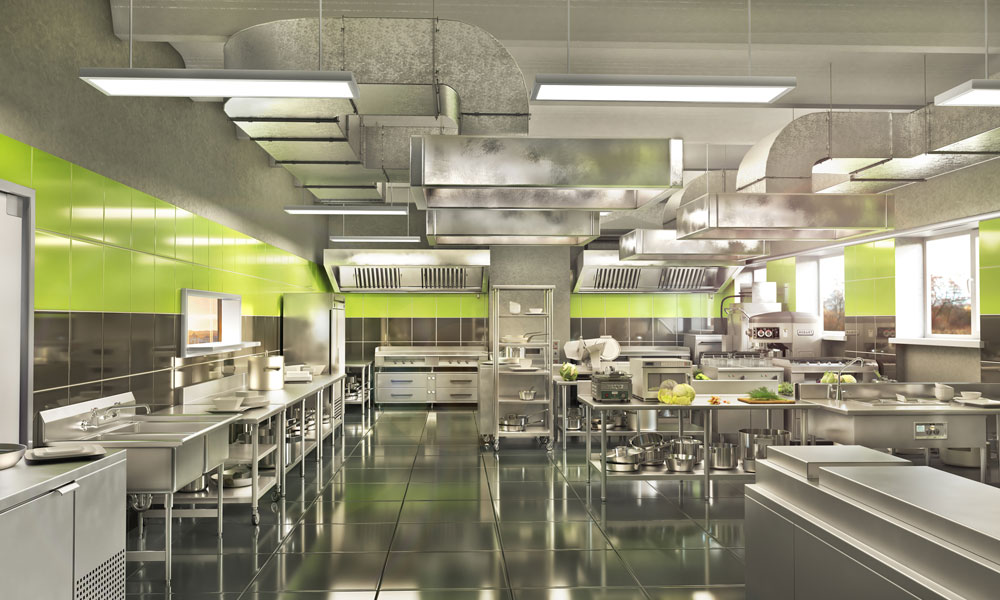Commercial kitchens can be hot and humid places to work in. When cooking is underway, not only are there people rushing around but food on the go on multiple hobs. Ventilation is key if you are planning a new commercial kitchen or refurbishing an existing location.
Here we look at the mistakes you need to avoid when planning your kitchen ventilation, whether it’s for a restaurant, bar or catering operation.
- Ventilation isn’t just a fan
One of the biggest mistake’s designers make when creating a commercial kitchen is thinking that the cooking equipment is all-important. Ventilation is not just a fan in the corner or a vent over the oven and it plays a vital role in the operation of any successful kitchen.
Ventilation needs to be designed with comfort and safety in mind. Once the cooking gets underway, staff need to be able to do their job properly. Ventilation will be defined by where you have your ovens, grills, and hobs and how your kitchen is designed and needs to be installed so that it maximises comfort.
- Site is important
Installing kitchen ventilation that works well and delivers everything you need depends a lot on location. Each kitchen is unique and requires its own designed system, but it is not just the interior space that matters.
Make sure that you look at where vents can be installed and how additional functions such as odour control and grease management can be incorporated. Some older buildings may have structures where putting in ventilation is not always feasible.
- Be careful with front-of-house kitchens
Step in any backroom kitchen and you’ll immediately hear the hum of the ventilation system over the noise of chefs busy preparing meals. If the plan is to create a front of house kitchen, however, this kind of noise can disrupt the enjoyment of diners.
Opting for quieter fans which still deliver enough power will make a big difference, for example.
- Pick an optimal ventilation system
It’s very easy when designing a kitchen space to go too far with the power of the system. Too much ventilation can simply cost you money in utility bills and result in higher costs for running your kitchen.
A lot will depend on size and design but it’s essential to look for an optimal system rather than one which delivers more power than you need.
- The little details matter
Picking the best ventilation brand for your commercial kitchen may be important but so are the smaller things like the type of filters that you use. The exchange of air in a kitchen is a key concern especially if you, for example, want to keep the effect of CO2 released by hobs and cookers to a minimum.
- Pay attention to economy
In any restaurant or catering facility, the kitchen and the ventilation system will eat up a large part of the utility costs. Introducing energy-saving measures makes a big difference but these can vary from brand to brand.
Look for ventilation that allows you to regulate the controls using sensor technology which means you can manage your system more efficiently.
- Ease of maintenance
Finally, in commercial kitchens, regular maintenance is not only desirable but also legally required to stop the build-up of fat and grease – something which could cause fires.
When installing your ventilation system, it’s vital to ensure that access is easy enough to allow maintenance engineers to do their job effectively so that your business complies with current regulations.
For help and advice on how to avoid mistakes with your own commercial kitchen, talk to the experts at Climate Zone today and get it right!

